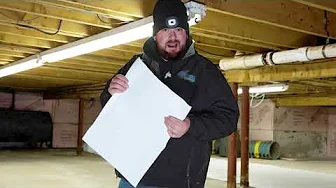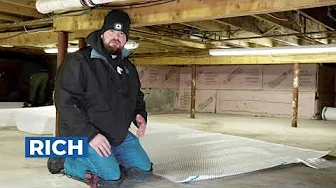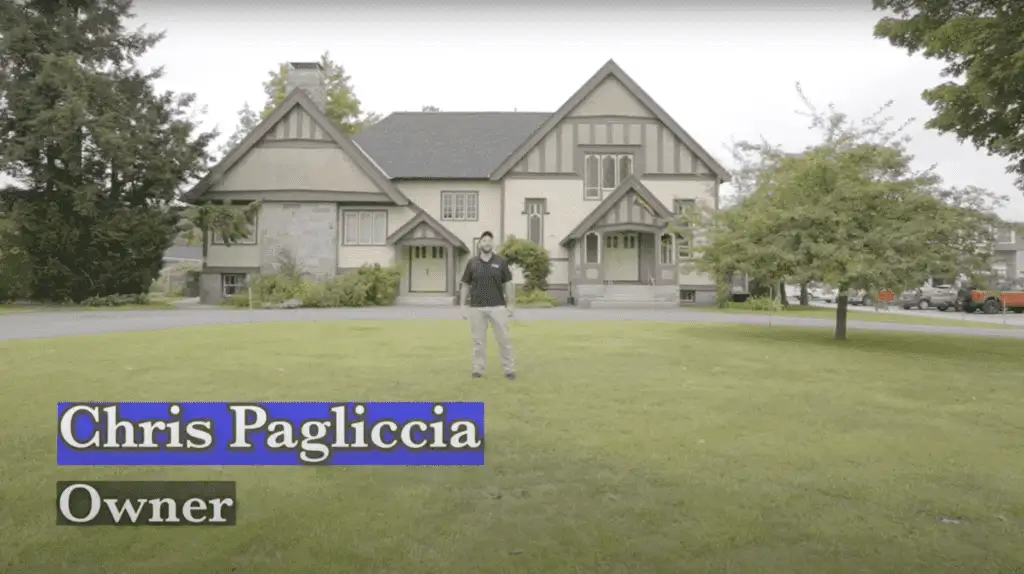Foundation Crack Repair Atkinson NH
Understanding the Importance of Foundation Integrity
A foundation isn’t just a concrete slab beneath your home—it’s what keeps everything above it stable and secure. When cracks appear, it’s more than just an aesthetic nuisance; it’s a warning sign that something deeper could be at play. Left unchecked, these cracks can expand, compromise structural stability, and even lead to costly repairs down the road.
In Atkinson, NH, the mix of harsh winters, fluctuating humidity, and shifting soil conditions puts homes under constant strain. Freezing and thawing cycles can cause soil to expand and contract, while heavy rains can saturate the ground, creating pressure against your foundation. All this wear and tear makes prompt attention to cracks more like a necessity than an option.
The bottom line? Catching foundation cracks early can save you a lot of time, money, and headaches. Whether you think your home has minor cosmetic issues or something more serious, understanding the importance of foundation integrity is the first step to protecting your investment.
Real People - Real Great Results
Crawl Space Video Playlist
Common Causes of Foundation Cracks
Foundations don’t crack just because they feel like it. There’s always a reason, and ignoring these causes is like pretending that a slow leak won’t eventually flood your basement. Here are the usual suspects behind foundation cracks:
- Soil Movement: If your foundation is the backbone of your home, the soil underneath it is the foundation’s backbone—and when it shifts, everything above it gets thrown out of whack. Clay soils in particular tend to expand when wet and shrink when dry, creating pressure that your concrete can only handle for so long.
- Water Damage: Water is nobody’s friend when it’s lingering where it shouldn’t be. Poor drainage or heavy New England rains can soak the soil around your foundation, making it unstable. Over time, the constant moisture weakens the concrete and invites cracks in like unwanted houseguests.
- Temperature Fluctuations: Let’s talk about those infamous New Hampshire winters. During freeze-thaw cycles, water in the soil freezes, expands, and pushes against your foundation. When it thaws, it lets up—only to repeat the process again and again. This rhythmic stress can wreak havoc over time.
- Construction Flaws: Not all foundations are created equal. If your concrete wasn’t mixed or poured properly, or if it wasn’t allowed to cure long enough during construction, cracks can develop later. This is less common in newer builds but not unheard of, especially in homes that were rushed to completion.
Recognizing what prompted those cracks is the first step to fixing them for good. And in Atkinson, where seasonal swings and varying soil conditions keep foundations on edge, knowing the root cause can save you a lot of trial and error down the line.
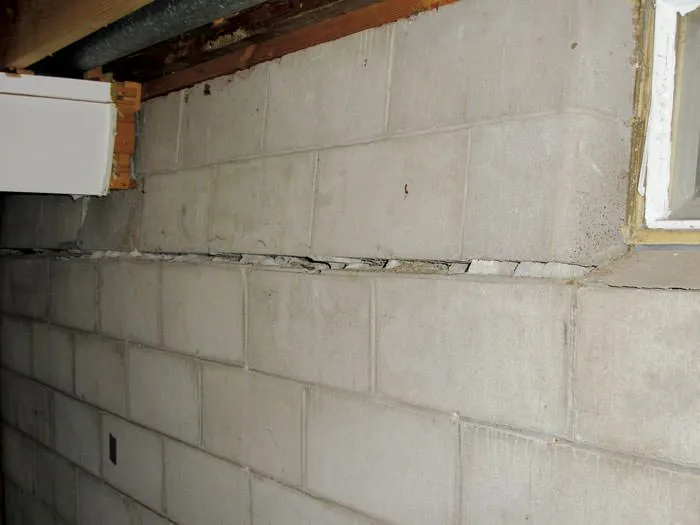
Signs That You Need Foundation Crack Repair
Not all cracks are created equal, and some can signal bigger problems lurking beneath the surface. Here’s a quick rundown of what to watch for if you’re keeping an eye on your Atkinson home:
- Stair-Step Cracks: These cracks, which often form in brick or concrete block, follow the lines of the mortar joints in a zigzag pattern. They’re common but can indicate shifting or settling that needs attention.
- Horizontal Cracks: These are the bad guys. Horizontal cracks typically mean your foundation is under significant pressure from outside forces, like expanding soil, and they shouldn’t be ignored.
- Wider-than-1/4-Inch Cracks: Measure them. Anything this wide or larger might indicate a structural concern beyond cosmetic fixes.
- Sticking Doors and Windows: If your doors jam or your windows don’t slide smoothly, it’s often a sign that the foundation is shifting and causing the frame to warp.
- Uneven Floors: If a marble rolls across the room, that’s a red flag. Sloping or bowing floors can point to serious foundational movement.
The bottom line? Pay close attention to what your house is telling you. If you spot any of these warning signs, don’t wait—the earlier you address a potential foundation issue, the easier (and less expensive) the fix.
Types of Foundation Cracks and What They Mean
Not every crack in your foundation signals catastrophe, but recognizing the different types can help you gauge their urgency. Here’s a practical cheat sheet:
- Hairline Cracks: These ultra-thin cracks are usually the result of normal concrete shrinkage as it cures. In most cases, they’re harmless and purely cosmetic. Keep an eye on them, though—if they expand or start leaking, they may require attention.
- Vertical or Diagonal Cracks: Generally caused by settling or minor shifts in the soil, these cracks tend to be less concerning from a structural perspective. That said, they can still let in water and moisture, which can lead to secondary problems like mold or interior damage. Sealing them early can help avoid bigger headaches down the line.
- Horizontal Cracks: This is where things start to get serious. Horizontal cracks often indicate pressure buildup from soil expanding against your foundation, usually from water-saturated soil or freeze-thaw cycles. These cracks signal notable structural stress and demand immediate professional evaluation.
- Foundation Displacement Cracks: If your foundation looks like it’s shifted or a section has moved relative to the rest, that’s a red flag. Displacement cracks point to significant structural instability, potentially resulting from poor building support, extreme soil movement, or even earthquake activity. These cracks aren’t a DIY fix—get an expert in as soon as possible.
By understanding what these cracks mean, you can decide whether it’s a quick patch job or time for something more heavy-duty. Never underestimate the value of early detection—it’s often the difference between an affordable repair and a full-blown foundation replacement.
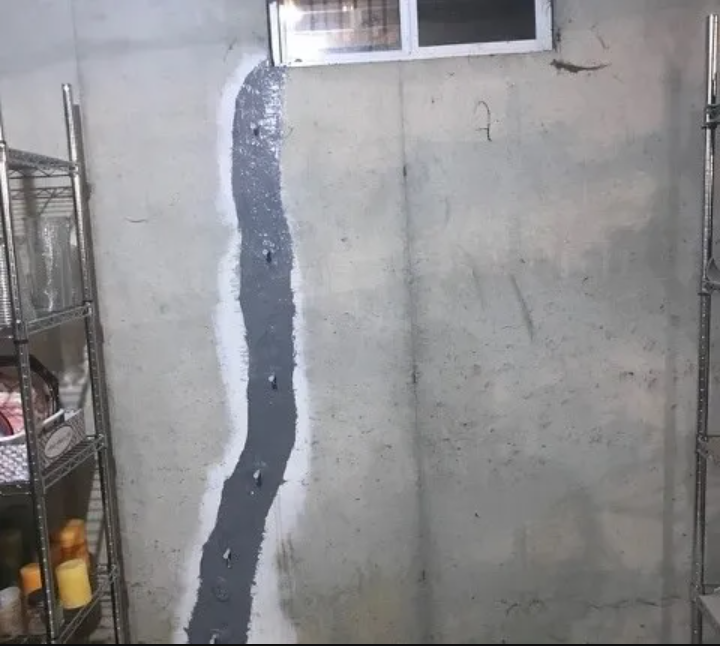
Foundation Repair Methods
Addressing foundation cracks requires a tailored approach—there’s no universal fix. The method chosen depends entirely on the crack’s origin, size, and severity, as well as your home’s specific conditions. Here are some of the most reliable techniques used by professionals in Atkinson, NH, and beyond:
- Epoxy or Polyurethane Injections: Perfect for small to medium cracks, these injections seal the opening and create a barrier against water infiltration. Epoxy works best for structural repairs, while polyurethane excels in tackling leaks. For minor, non-structural cracks, this is often the go-to solution.
- Carbon Fiber Straps: When horizontal cracks appear, it’s time to worry; they usually signal pressure from soil or water against your foundation walls. Carbon fiber straps are installed to reinforce those walls from bowing or further cracking. Light on intrusion, heavy on strength.
- Helical Piers or Push Piers: If your foundation is sinking or shifting due to unstable soil, piers are the answer. By driving these supports deep into stable soil or bedrock, professionals can lift and stabilize your home back to its original position. Think of it as giving your house a new set of legs.
- Grading and Drainage Improvements: Fixing the foundation itself is only one part of the puzzle. Poor drainage is one of the primary reasons foundations fail in the first place, especially in places like Atkinson, where heavy rain and snowmelt saturate the soil. Regrading the landscape to slope water away from your home—or adding drainage systems like French drains—prevents the cycle of cracking from repeating.
Every crack is different, and so is the solution. Choosing the right repair method matters. Mishandling a seemingly simple crack could either mask deeper structural problems or cause a more expensive failure down the road. Always start with an inspection by a local expert who understands the unique climate and soil conditions of Atkinson, NH. One size never fits all—especially in foundation repair.
Why Local Expertise Matters in Atkinson NH
When it comes to foundation repair, geography is everything. Atkinson, NH faces a unique combination of environmental challenges—harsh freeze-thaw cycles, clay-heavy soil that shifts unpredictably, and the occasional pounding from heavy New England rainstorms. These factors don’t just shape the landscape; they define the wear and tear on your home’s foundation. Local experts understand this better than anyone. They’ve seen it all—from frost heaves splitting concrete seams to excess moisture wreaking havoc on basement walls.
Hiring a foundation repair specialist who knows Atkinson’s quirks is like choosing a seasoned trail guide over a GPS in the wilderness. It’s an advantage you can’t afford to overlook. A professional familiar with the area’s specific soil composition, climate impact, and building norms will know the right diagnostic questions to ask and the best-suited solutions to implement. They won’t recommend one-size-fits-all fixes that ignore Atkinson’s nuances—they’ll give you tailored options that work because they’ve been battle-tested right here at home.
Trusting someone local also means they’re well-versed in regional regulations and code requirements. More importantly, they’re invested in doing the job properly; their reputation isn’t measured in sweeping ad campaigns but in the quality of repair work they’ve done for your neighbors. It’s not just about fixing a crack. It’s about ensuring reliability for years to come, in a town where winters are unforgiving and shortcuts only create bigger problems later.
Preventing Future Foundation Issues
Prevention isn’t glamorous, but it’s a lot cheaper and easier than repairing a compromised foundation. A few simple steps can help you dodge future headaches and ensure your foundation stays solid. First, grade your landscaping properly—the ground around your home should slope away to channel water where it belongs. Standing water next to your foundation is practically an invitation for trouble. Adding gutters and downspouts to manage roof runoff is another no-brainer. Just make sure those downspouts extend far enough to keep water from pooling near the base of your house. Water isn’t the only factor, though. Keeping soil moisture consistent goes a long way, especially in Atkinson’s freeze-thaw climate.
Extreme dryness and excessive wetness can both cause soil to shift, affecting the stability of your foundation. During dry spells, consider watering the soil lightly near the foundation to prevent shrinkage. On the flip side, resolve any plumbing leaks or drainage issues before they saturate the surrounding ground. Regular inspections should round out your prevention plan. Catching small issues before they become big problems—like hairline cracks or water pooling—will save you a fortune down the line. Staying proactive doesn’t just protect your foundation; it protects your wallet.
When To Call a Professional
Not every crack needs a hard hat and a contractor, but there’s a line where DIY stops being enough. If you’re spotting cracks that seem to grow wider or longer over time, especially those more than 1/4-inch wide, it’s time to get serious. Horizontal cracks? That’s your house waving a red flag—you’re likely dealing with soil pressure or structural stress that’s more than cosmetic.
Beyond the cracks themselves, pay attention to what’s happening elsewhere in your home. Are doors refusing to close like they should? Floors looking suspiciously uneven? These aren’t quirks of an older home—they’re often symptoms rooted in foundation trouble. And if water seepage becomes part of the picture, the issue isn’t just about stability anymore; it’s about keeping your home dry and damage-free.
DIY fixes, like sealing small hairline cracks, can work in limited cases, but they’re not a catch-all solution—especially if you’re unsure about the underlying cause. Calling in a professional may cost more upfront, but they bring experience, specialized tools, and the ability to diagnose and resolve deeper problems. In towns like Atkinson, NH, where freeze-thaw cycles and soil dynamics are just part of life, an expert who knows local conditions can make a world of difference. If your gut says the problem might be beyond your toolkit’s pay grade, trust it. It’s better to make the call sooner rather than later.

Conclusion
Foundation issues can escalate quickly if left unaddressed. Cracks that begin as minor cosmetic imperfections can evolve into significant structural threats, compromising the safety, stability, and value of your home. In a place like Atkinson, NH, where weather extremes and seasonal changes are par for the course, vigilance is key. Whether it’s a horizontal crack signaling soil pressure or a stair-step crack hinting at shifting ground, acting promptly will save you headaches—and money—down the road.
Remember, a strong foundation isn’t just about keeping your house standing; it’s about peace of mind. Don’t wait for a widening crack to become an expensive lesson in procrastination. Consult experts who understand the unique challenges of maintaining homes in New Hampshire’s climate, and take the necessary steps to secure your property for years to come.
Reviews from Happy Customers
Our top priority is customer satisfaction, and we work closely with clients to understand their unique needs and goals.




